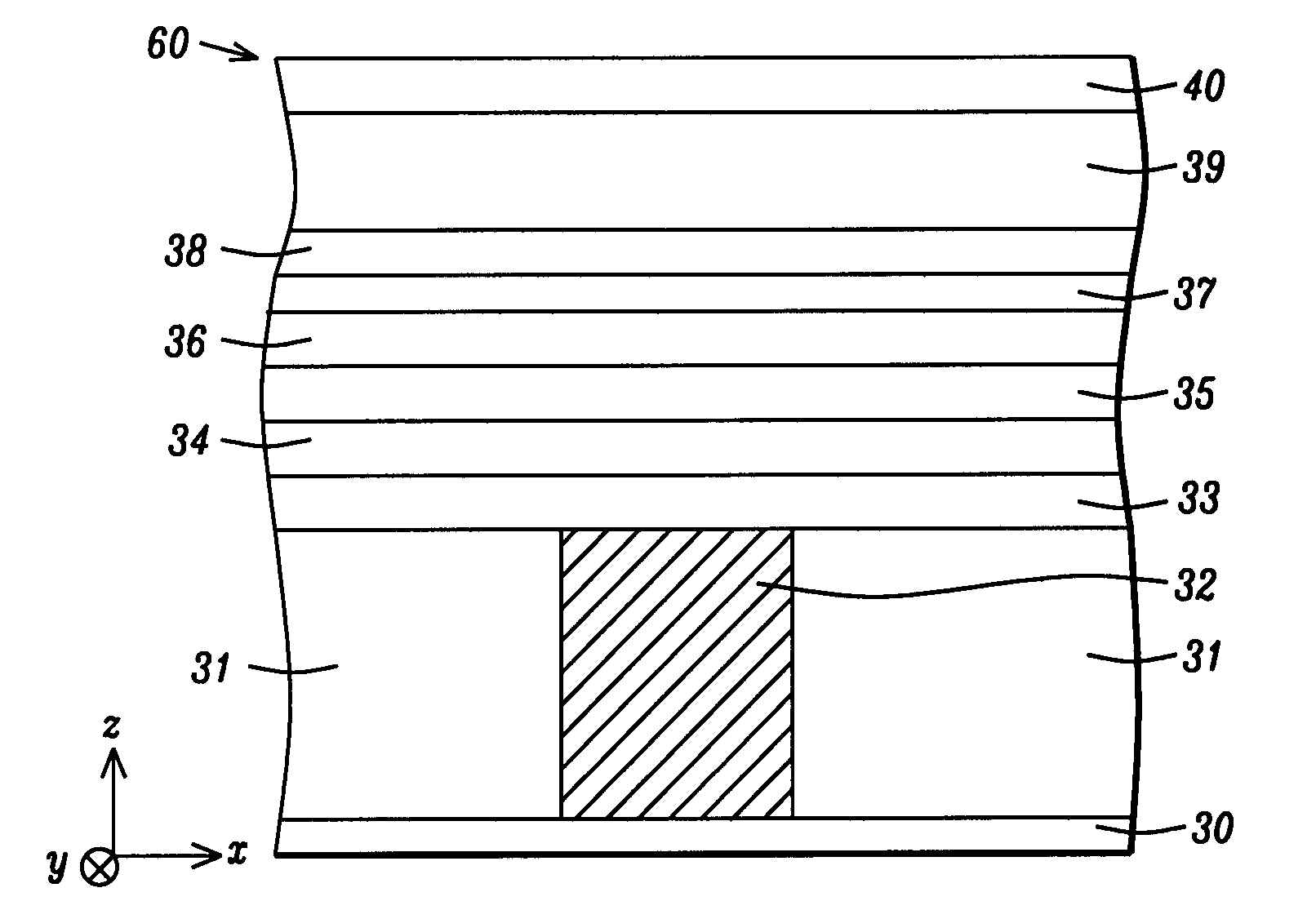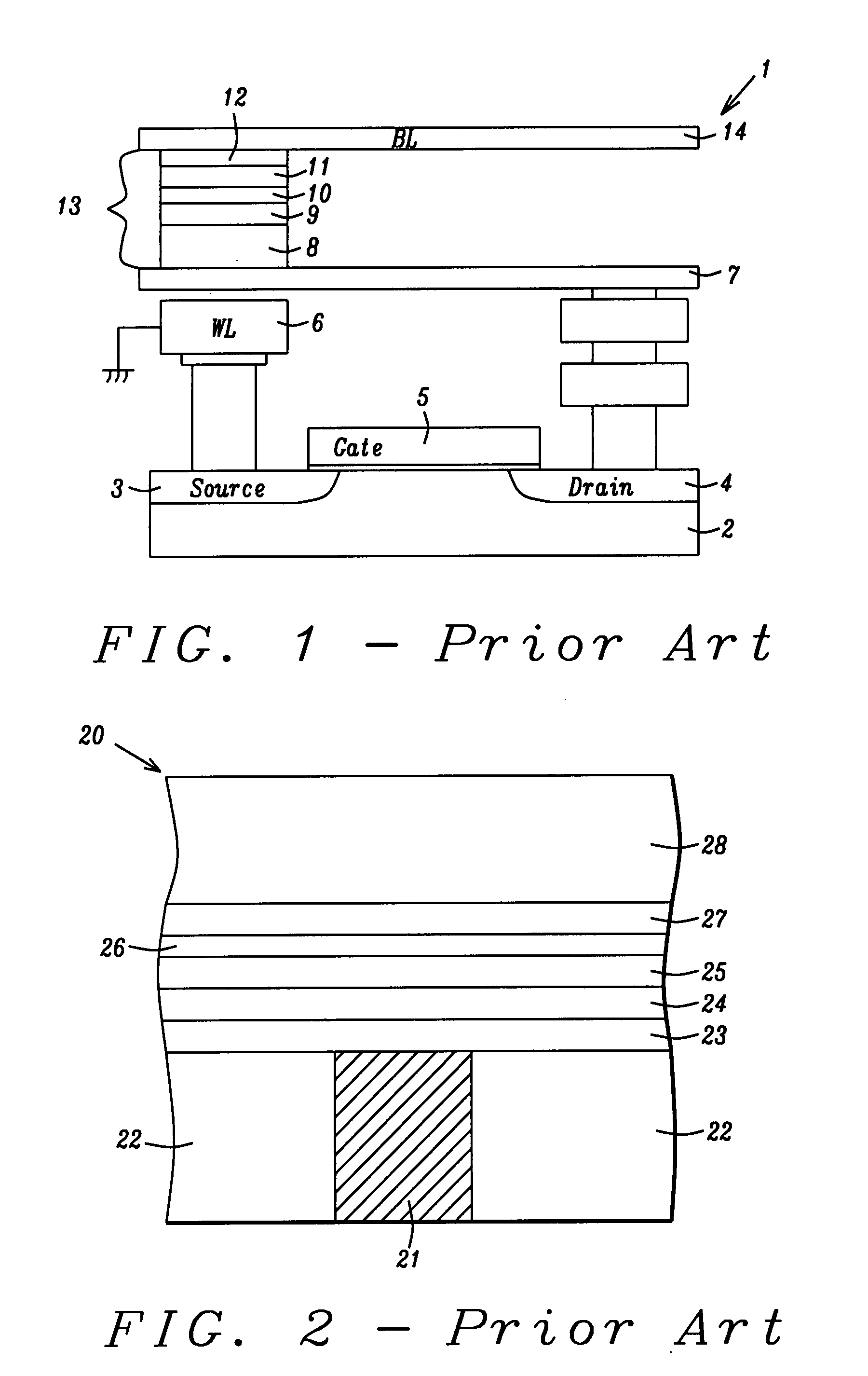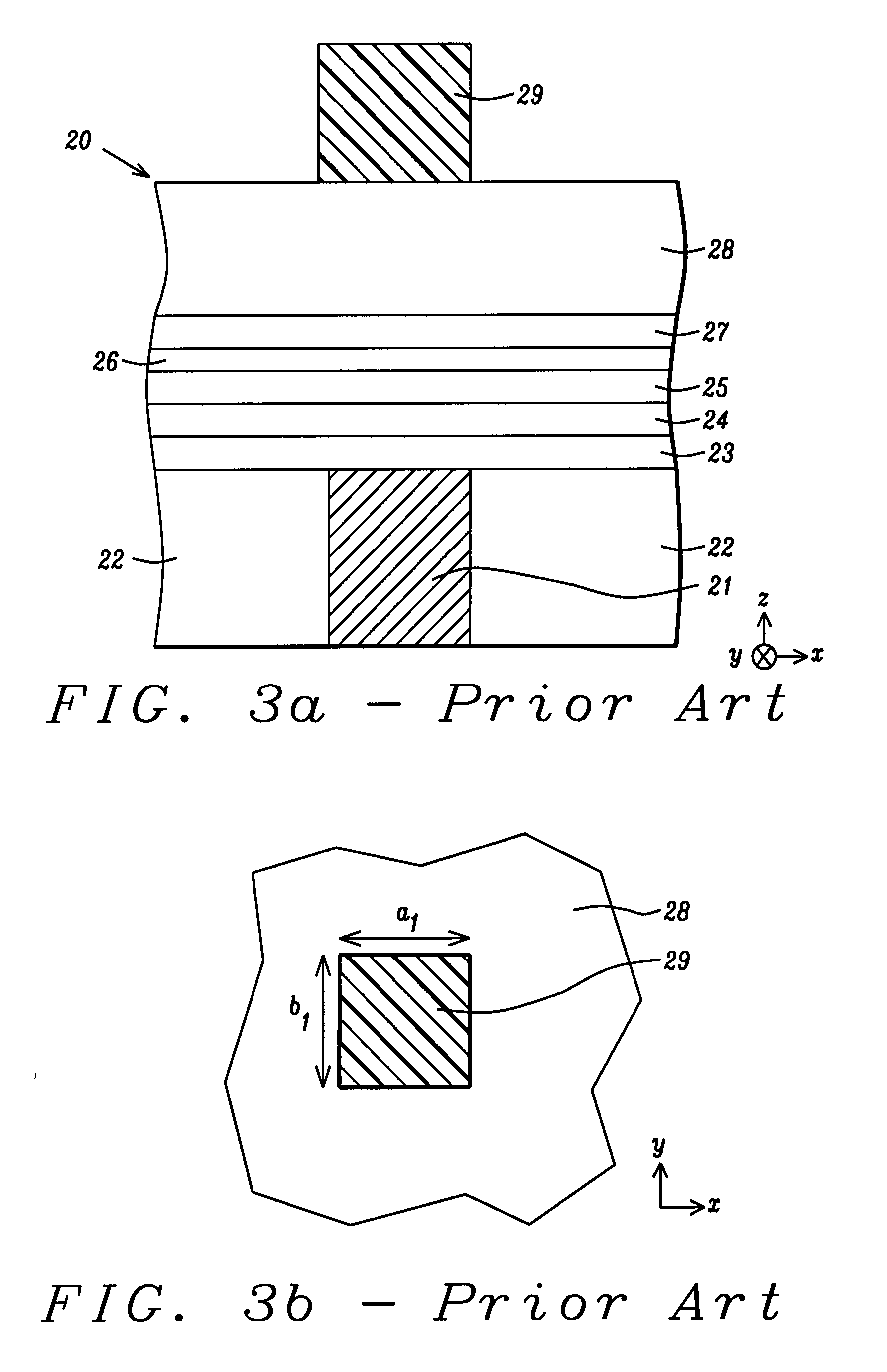Method of magnetic tunneling layer processes for spin-transfer torque MRAM
a technology of magnetic tunneling layer and spin-transfer torque, which is applied in the manufacture/treatment of electrical equipment, semiconductor devices, and electrical devices of magnetic devices, etc., can solve the problems of stt-mram's fundamental limitation of scalability, the fabrication process of stt-mram is very challenging, and the aspect ratio (thickness/cd) may become too larg
- Summary
- Abstract
- Description
- Claims
- Application Information
AI Technical Summary
Benefits of technology
Problems solved by technology
Method used
Image
Examples
first embodiment
[0038]A method of forming a MTJ element in a STT-MRAM structure according to the present invention will now be described. Referring to FIG. 5, a partially completed STT-MRAM structure 60 is shown that includes a substrate 30 which may be a CMOS substructure used in the art that typically contains devices such as transistors and diodes. A first insulation layer 31 comprised of Al2O3, silicon oxide, or the like is disposed on the substrate 30. There is a metal contact 32 to the CMOS substructure 31 formed within and coplanar with the first insulation layer 31. The metal contact 32 may be made of copper, for example. It should be understood that there is a plurality of metal contacts 32 formed within the first insulation layer 31, and there is a plurality of STT-MRAMs 60 formed on the substrate 30. However, only one metal contact and one STT-MRAM are depicted to simplify the drawing. There is also a plurality of bit lines and word lines (not shown) formed in a cross-point architecture ...
second embodiment
[0065]To summarize the second embodiment, the combination of the two photolithography steps and two etch steps that determine the CDs along the easy-axis and hard-axis directions may result in at least four configurations represented by FIGS. 15a-15b and FIGS. 16a-16b. In one aspect, the first etch and second etch may both stop on the bottom electrode layer 33. In a second configuration, the first etch and second etch may both stop on the tunnel barrier layer 37 or inside the free layer 38. In a third configuration, one etch may stop on the bottom electrode and the other etch may stop on the tunnel barrier layer (or inside the free layer). Thus, FIG. 15b may represent a view from the plane 51-51 that includes the hard axis and FIG. 16b may represent a view from the plane 50-50 that includes the easy-axis. The present invention also anticipates that the plane 50-50 may include the hard-axis and plane 51-51 may include the easy-axis.
[0066]Subsequent process steps to complete the STT-M...
PUM
 Login to View More
Login to View More Abstract
Description
Claims
Application Information
 Login to View More
Login to View More - R&D
- Intellectual Property
- Life Sciences
- Materials
- Tech Scout
- Unparalleled Data Quality
- Higher Quality Content
- 60% Fewer Hallucinations
Browse by: Latest US Patents, China's latest patents, Technical Efficacy Thesaurus, Application Domain, Technology Topic, Popular Technical Reports.
© 2025 PatSnap. All rights reserved.Legal|Privacy policy|Modern Slavery Act Transparency Statement|Sitemap|About US| Contact US: help@patsnap.com



